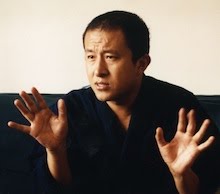- The challenges of adaptation: the risk of over-simplifying by throwing too much out, and the risk of including elements from other cultures that aren't relevant to the West
- The importance for the current generation of Buddhist practitioners in ensuring an authentic transmission of dharma to the West
- In Tibet, the ecumenical (rimé) movement sought to overcome divisiveness among the four Tibetan schools. In the West, these four are also interacting with all the other Buddhist traditions such as Zen, Vipassana, Japanese Buddhism etc, in a way that is historically unprecedented. What might a rimé movement look like in the West?
Wednesday, September 16, 2009
Buddhist History - Week 6
Here's the recording from our meeting on 5 September. We took a break from Conze's review of early Buddhist history to look at Alan Wallace's review of trends in contemporary Buddhism, specifically "The Spectrum of Buddhist Practice in the West" (available here). The parallels between the development of the Mahayana in India and the transition of Buddhism to the West are quite remarkable, and suggest that the development of a new form of Buddhism adapted to the pre-existing Western social, cultural and intellectual environment is inevitable. We started to look at some aspects of what this might include. Some topics we discussed include:
Subscribe to:
Post Comments (Atom)
.jpg)
.jpg)
No comments:
Post a Comment